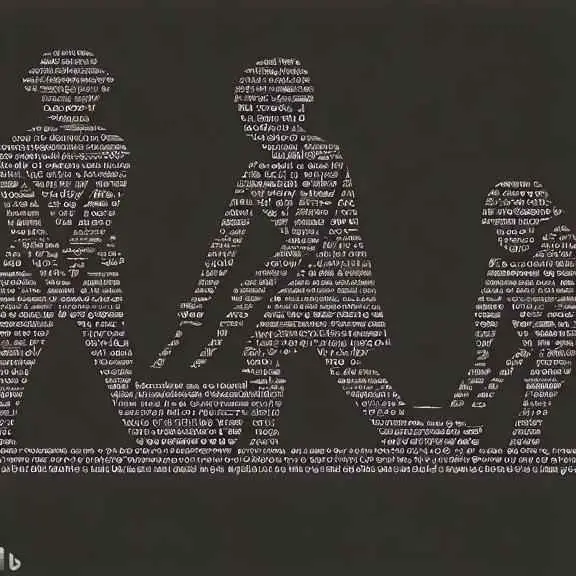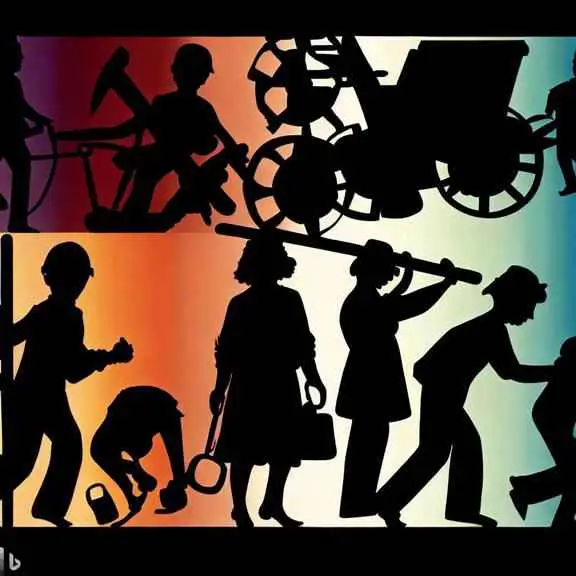Paragraph on
Child Labour
for all Class, Words
by Society on
Child labour is a global issue that affects millions of children worldwide. According to the International Labour Organization (ILO), there…, please continue reading.

Table of Content
Ad
The Paragraph on Child Labour
Ad
Child labour is a global issue that affects millions of children worldwide. According to the International Labour Organization (ILO), there are an estimated 152 million children engaged in child labour, with 73 million of them involved in hazardous work. Child labour is defined as work that is mentally, physically, or morally harmful to children, and it deprives them of their childhood, education, and opportunities for a better future.
Child labour is prevalent in many developing countries, where poverty, lack of education, and weak law enforcement have allowed the practice to thrive. Children are often forced into work by their families, or they end up in exploitative situations, such as working in mines, factories, or on farms. They are subjected to long hours, low pay, and dangerous conditions, which expose them to physical and emotional abuse, and even death.
Child labour has significant negative consequences for children, families, and society. It perpetuates poverty, as child labourers often lack the education and skills needed to break the cycle of poverty. It also undermines children’s health and development, as they are denied the right to education, play, and rest, which are essential for their physical, emotional, and cognitive growth. Moreover, child labour perpetuates social inequality and injustice, as it disproportionately affects children from marginalized communities, such as ethnic minorities, girls, and children with disabilities.
Efforts to combat child labour must involve a multidisciplinary approach, including measures to address poverty, improve access to education, and strengthen law enforcement. Governments, NGOs, and private sector actors must work together to eliminate child labour and promote children’s rights and well-being. Education is a powerful tool in preventing child labour, as it equips children with the knowledge and skills needed to make informed decisions about their future. In addition, empowering families and communities by providing them with the resources they need to overcome poverty and invest in their children’s education and development is crucial for breaking the cycle of child labour.

Questions about Child Labour
Ad
Questions and Answers:
- What is child labour?
Child labour is defined as work that is mentally, physically, or morally harmful to children that deprives them of their childhood, education, and opportunities for a better future.
- How many children are engaged in child labour?
According to the ILO, there are an estimated 152 million children engaged in child labour, with 73 million of them involved in hazardous work.
- Why is child labour prevalent in developing countries?
Child labour is prevalent in many developing countries due to poverty, lack of education, and weak law enforcement.
- What are some of the negative consequences of child labour?
Child labour perpetuates poverty, undermines children’s health and development, and perpetuates social inequality and injustice.
- In what types of work are child labourers typically employed?
Child labourers are often employed in exploitative situations, such as working in mines, factories, or on farms.
- How does child labour affect a child’s education?
Child labour deprives children of their right to education, which is essential for their physical, emotional, and cognitive growth.
- How can education help prevent child labour?
Education is a powerful tool in preventing child labour, as it equips children with the knowledge and skills needed to make informed decisions about their future.
- What can be done to combat child labour?
Efforts to combat child labour must involve a multidisciplinary approach, including measures to address poverty, improve access to education, and strengthen law enforcement.
- Who should be involved in efforts to combat child labour?
Governments, NGOs, and private sector actors must work together to eliminate child labour and promote children’s rights and well-being.
- Why is breaking the cycle of child labour important?
Breaking the cycle of child labour is crucial for promoting social justice, empowering families and communities, and ensuring that all children have the opportunity to reach their full potential.

Vocabulary related to Child Labour
Ad
Vocabulary Words:
-
Child labour - work that is mentally, physically, or morally harmful to children that deprives them of their childhood, education, and opportunities for a better future.
-
Exploitative - taking unfair advantage of a person or situation, often for financial gain.
-
Marginalized - being excluded, ignored, or treated as inferior, often due to belonging to a particular group or community.
-
Cognitive - relating to the mental processes of perception, memory, judgment, and reasoning.
-
Multidisciplinary - involving several disciplines or fields of study.
-
Empowering - enabling individuals or groups to take control of their lives and make decisions that affect them.
-
Injustice - violation of the principles of fairness, equity, and human rights.
-
Law enforcement - actions taken by the government to enforce laws, maintain public order, and ensure the safety and security of citizens.
-
Education - the process of acquiring knowledge, skills, values, and attitudes through learning, study, or research.
-
Poverty - the state of being extremely poor, lacking the basic necessities of life such as food, shelter, and clothing.
-
Health - the condition of being physically, mentally, and socially well.
-
Development - the process of growing, changing, and maturing over time.
-
Hazardous - involving risk or danger, often to health or safety.
-
Resources - materials, assets, or other sources of support or aid that can be used to achieve a goal or objective.
-
Cycle - a series of events or processes that repeat themselves over time.
Child labour - work that is mentally, physically, or morally harmful to children that deprives them of their childhood, education, and opportunities for a better future.
Exploitative - taking unfair advantage of a person or situation, often for financial gain.
Marginalized - being excluded, ignored, or treated as inferior, often due to belonging to a particular group or community.
Cognitive - relating to the mental processes of perception, memory, judgment, and reasoning.
Multidisciplinary - involving several disciplines or fields of study.
Empowering - enabling individuals or groups to take control of their lives and make decisions that affect them.
Injustice - violation of the principles of fairness, equity, and human rights.
Law enforcement - actions taken by the government to enforce laws, maintain public order, and ensure the safety and security of citizens.
Education - the process of acquiring knowledge, skills, values, and attitudes through learning, study, or research.
Poverty - the state of being extremely poor, lacking the basic necessities of life such as food, shelter, and clothing.
Health - the condition of being physically, mentally, and socially well.
Development - the process of growing, changing, and maturing over time.
Hazardous - involving risk or danger, often to health or safety.
Resources - materials, assets, or other sources of support or aid that can be used to achieve a goal or objective.
Cycle - a series of events or processes that repeat themselves over time.
Structure of the sample "Child Labour" paragraph
Ad
Cohesion and coherence:
The paragraph starts with a clear topic sentence that introduces the topic of child labour and provides the reader with an understanding of the problem’s scope. The subsequent sentences provide more details about the issue, its causes and consequences, and the measures that can be taken to address it. The use of transition words, such as “moreover,” “in addition,” and “however,” creates a logical and coherent progression of ideas, helping to guide the reader through the paragraph’s content. The use of examples and statistics, such as the number of children engaged in child labour and the types of work they are involved in, adds credibility to the argument and creates a more concrete understanding of the issue. Overall, the paragraph effectively communicates the severity of the issue and the need for action through its cohesive and coherent structure.
